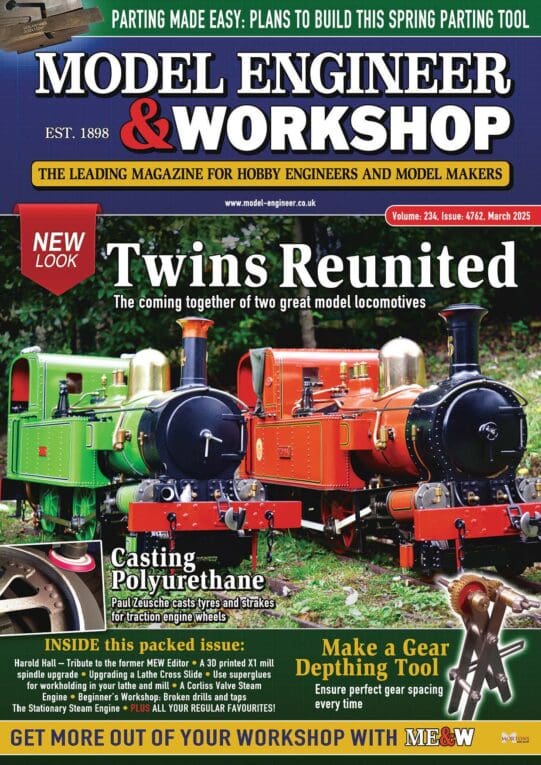I read with interest, and a little concern, the article in MEW #175/176 on the construction of a so-called “Accurate CNC 4th axis”.
The main cause for concern was the choice of the athor to use a simple toothed belt reduction of 3.6:1, between the stepper and the spindle, and his calculation that with 8 microsteps, this would result in 5760 steps per rev of the spindle. All very well on paper but…
Firstly, stepper motors are not precision instruments in themselves. The positioning of whole steps on a stepper motor is typically quoted at 5-10%, but if you start going down the microstepping route, all bets are off as the microstep accuracy is highly dependent on the ability of the microstepping drive to accurately position the microsteps (which it achieves by applying varying currents to the two motor coils), and this ability is generally pretty poor. So if you are looking for the best accuracy that you can get out of a stepper based system, then you are better off going for full stepping and uping the drive ratio accordingly, because at least then the accuracy should be as good as the motor is inherently capable of.
Secondly, the accuracy quoted for a stepper motor is under no-load conditions. Apply any rotational force to the motor shaft and it will move to a point where the restoring torque generated by the coils on the magnets of the rotor is exactly equal and opposite to the force applied. So, assuming the force isn’t great enough to cause the rotor to turn to the next step position, then an applied force could cause a positional error of up to 1/2 a step of the motor (i.e., a step position error of 50%). Obviously, there are two ways that this can be ameliorated; you can use a socking great big stepper that generates a gozillion oz-inches or newton-meters of torque, or you can increase the drive ratio to suit the real-life working conditions. In a CNC mill, those conditions can be fairly “interesting”; slap even a modest stepper motor on the end of a 1mm pitch screw and the resultant force moving the axis can be quite large – for example, with my Taig CNC mill (see MEW 120, 121) I figured out that the 120 oz-in motors I used were capable of generating around 100 kilos of force at the tool tip, with a mechanical advantage via the leadscrew of around 125:1. Now, stick a 4th axis with a mechanical advantage of only 3.6:1 on the table of my Taig, and once you start taking a decent sized cut, something is going to give; that something is the posinal accuracy of the 4th axis. So what is the solution? Obviously, use a drive ratio for the 4th axis that is considerably greater than 3.6:1; perhaps slightly less obviously, use a worm drive rather than simple gearing. Why? Because if you use a worm drive with a reasonable ratio (say, 30:1 or greater) it is impossible to drive it backwards against even a small force holding the worm in position. This is one of the major reasons why worm drives, often as high as 90:1, as mentioned by the author, are used for 4th axis drives; they provide, in a single compact package, a large reduction ratio and the important characteristic that they can’t be back-driven by cutting forces.
So, while Mr Gordon’s device is nicely designed and well explained, I fear that building one in the hope of it being useful for real CNC work would be a waste of time.
A secondary cause for concern was the heavy weather the author made of his problems with the quality of toothed pulleys, and the astonishing solution that he mentioned in part 2 of re-machining one of the pulleys after layering on car body filler. Frankly if I had gone down that kind of route I would have kept very quiet about it when I wrote up the project! Treality is that toothed pulleys and belts of a suitable quality are readily available – RS Components for example – however, as mentioned above, this was in any case an example of the old Irish joke – “I wouldn’t start from here!”.
Turning a worm/wheel driven dividing head or a rotary table into a CNC 4th axis is a far more rewarding, and far easier, solution; it will give far greater precision than the one described in the articles, and will not suffer from its very obvious, and in my view fatal, flaws.
Regards,
Tony
Gordon W.





